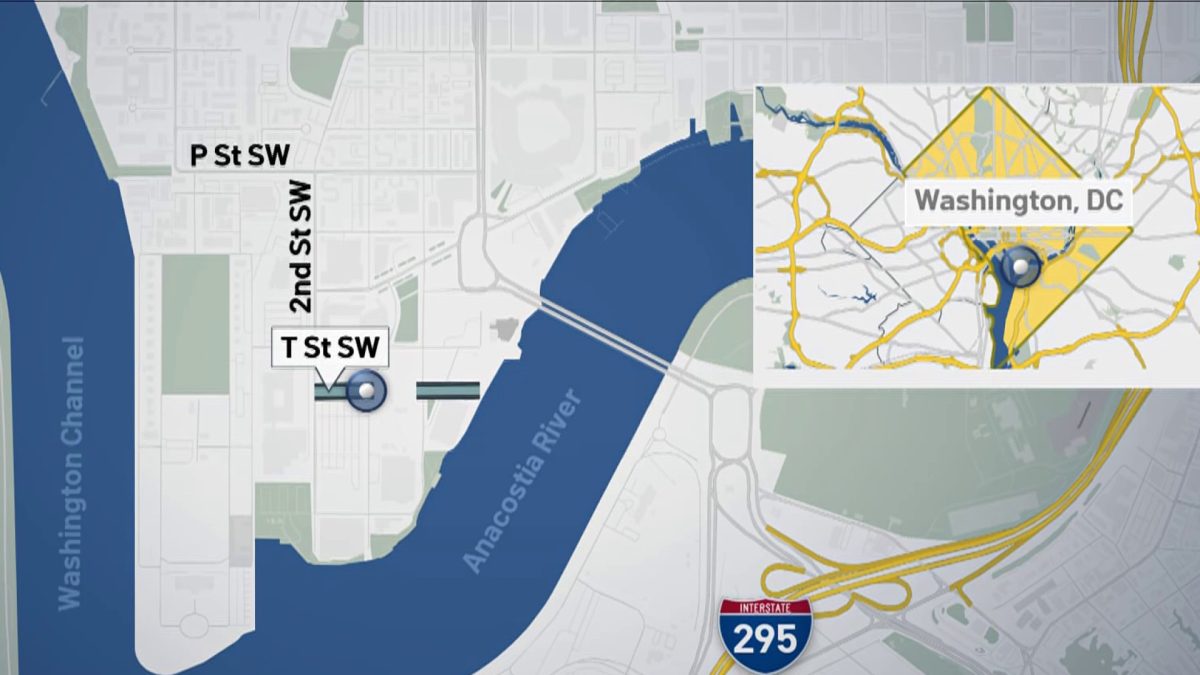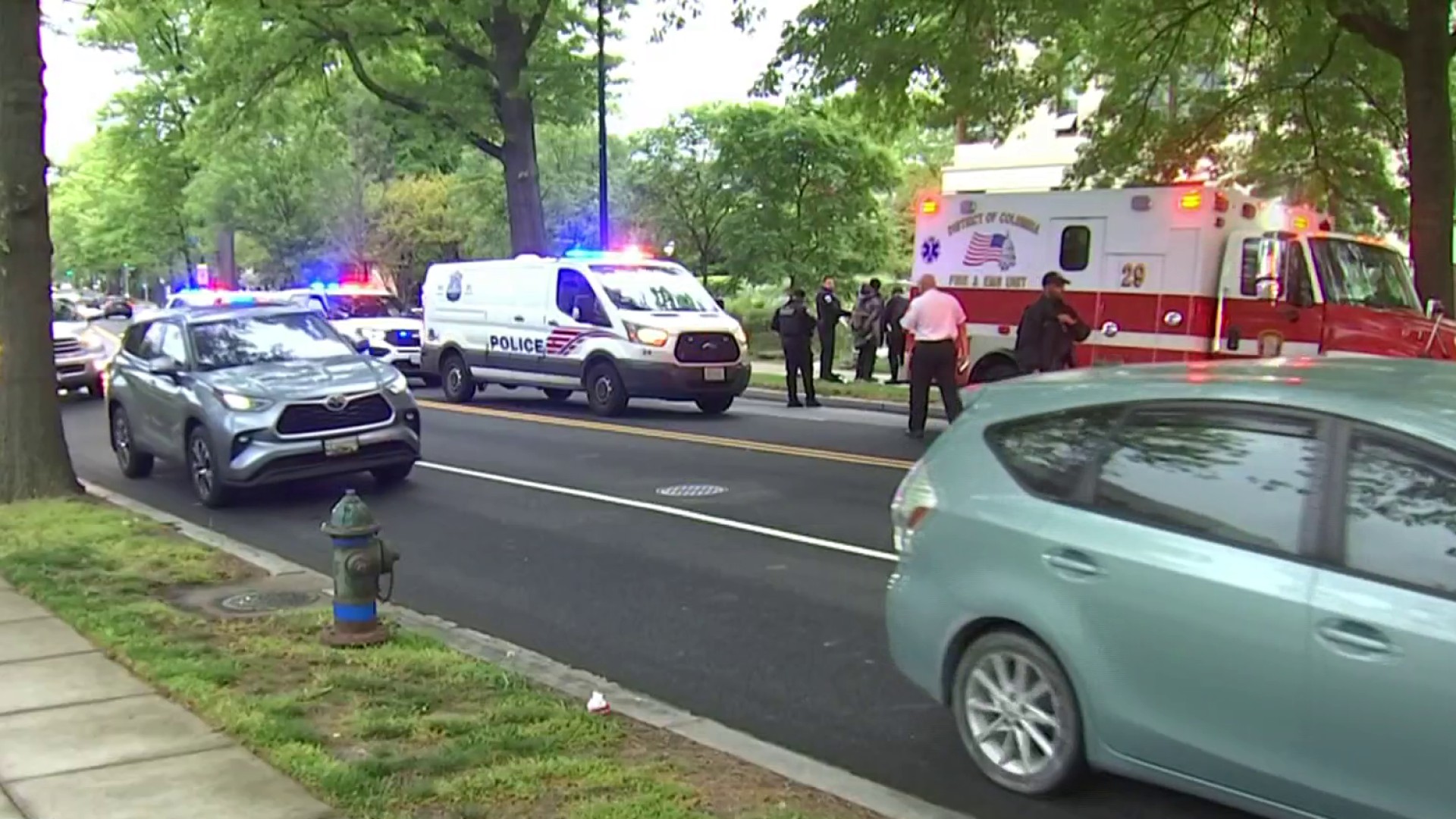Today marks one year since the region was shaken by a 5.8-magnitude earthquake centered nine miles from Mineral, Va.
The quake was unique because it was wide enough to be felt by one-third of the country's population, the U.S. Geological Survey said. That makes it one of the largest, though not strongest, in U.S. history. Scientists have recorded more than 600 aftershocks.
The quake hit at about 1:50 p.m. on Aug. 23, 2011, and snarled traffic into the evening. Aftershocks followed, including a 4.2-magnitude one felt inside the Beltway. The damage, estimated at more than $200 million, extended far beyond rural Louisa County.
Here in Washington, we're still feeling the effects from the quake: The Washington Monument sustained serious structural damage, the top of the obelisk has several large cracks that need to be repaired. And those repairs are expected to cost close to $15 million.
A seismic assessment of the Washington Monument has concluded that it's "extremely unlikely" another earthquake in the next two millennia will damage the monument any more than last year's quake.
A repair plan released last month said engineers had not recommended any further strengthening of the monument against future earthquakes. The seismic assessment bolsters that recommendation by pointing out that the monument shook more violently last year than during any earthquake that's likely to occur in the next 2,475 years.
The landmark is likely to remain closed until 2014.
The Washington National Cathedral announced a $5 million gift today from the Lilly Foundation, which will go toward making repairs on the damaged structure.
Local
Washington, D.C., Maryland and Virginia local news, events and information
The cathedral had suffered millions of dollars' worth of damage, and has been decorated with scaffolding for much of the past year. Some of the most noticeable damage was to two of the pinnacles. About one-third of the 3,000-pound southwest pinnacle fell off, and the northwest pinnacle was visibly tilting.
The cathedral reopened last November, but repairs are expected to take years and cost $20 million.
In Virginia, the Federal Emergency Management Agency awarded $19 million to help rebuild Louisa County High School, and $3.2 million to help rebuld a Louisa County elementary school.
Earthquake drills are now as ubiquitous as fire drills at county schools, where 4,600 students were attending classes when the quake struck nearby. No one was seriously hurt.
"It's the new normal," Superintendent Deborah D. Pettit said of the earthquake drills. "It's become a normal part of the school routine and safety."
One such drill was held Thursday at 1:51 p.m. -- the precise moment a year ago when the quake struck.
While West Coast earthquake veterans scoffed at what they viewed as only a moderate temblor, last year's quake has changed the way officials along the East Coast view emergency preparedness.
Emergency response plans that once focused on hurricanes, tornadoes, flooding and snow are being revised to include quakes. Some states have enacted laws specifically related to the quake, and there is anecdotal evidence of a spike in insurance coverage for earthquake damage.
Was it a once-in-a-century anomaly, or are there more quakes to come?
Scientists are trying to answer that question as they pore over the data and survey the epicenter from the air.
According to the U.S. Geological Survey, much of central Virginia has been labeled for decades as an area of elevated seismic hazard. But last year's quake was the largest known to occur in that seismic zone.
"Scientists would like to know if this earthquake was Virginia's 'Big One,''' said J. Wright Horton of the USGS.
Meanwhile, the quake prompted several jurisdictions to revise their emergency response plans.
"We learned a lot, that's for sure,'' said Laura Southard, a spokeswoman for the Virginia Department of Emergency Management. One lesson, she said: the need to conduct post-quake assessments to size up damage.
Ultimately, 6,400 homeowners and renters in nine Virginia localities received $16.5 million from the Federal Emergency Management Agency.
Virginia, Maryland and the District of Columbia are revising their emergency planning documents to include earthquakes. The response of many East Coast residents -- many of whom fled high-rise buildings -- went counter to the behavior recommended by experts during a quake.
"It's fair to say that no one thought we'd have an earthquake,'' said Christopher Geldart, director of the D.C. Homeland Security and Emergency Management Agency. The agency is hoping to educate the public about what to do next time. It is even encouraging participation in a regional earthquake drill this fall.
The agency has made changes in how it alerts local government employees and residents about disasters. It didn't send out an alert about the earthquake until 30 minutes afterward -- at which point many people had already decided to leave the capital and ended up in traffic jams for hours. Now, the goal is to send out a communication within five minutes.
Those whose buildings aren't compromised will also be advised to stay put.
In Maryland, the state's first emergency quake exercise was conducted in April. The state was spared major damage a year ago. But Edward McDonough, a spokesman for the Maryland Emergency Management Agency, said: "It definitely shook us up, pardon the pun.''
Insurance industry associations and regulators could not provide statistics on whether the earthquake inspired homeowners to add coverage for such an event, but a small percentage of property owners have it.
State Farm spokeswoman Amy Preddy said less than 2 percent of its policyholders in Virginia have what is called an earthquake "endorsement,'' though she said the company has seen a small increase in coverage requests in Louisa and Fluvanna counties.
The Virginia General Assembly has passed legislation since that requires insurers to inform new and renewing customers whether earthquake coverage is excluded in their policies and whether it is available.
Dominion Virginia Power spent about 110,000 hours and $21 million on inspections, testing and evaluation of the North Anna Power Station after the quake. The U.S. Nuclear Regulatory Commission gave Dominion permission to restart the twin 1,800-megawatt reactors on Nov. 11 after inspections showed they did not suffer any functional damage.
Since the quake, Dominion also has installed additional seismic monitoring equipment. Dan Stoddard, senior vice president of nuclear operations for Dominion, said the plant's reactors have experienced no earthquake-related issues following the restart.



